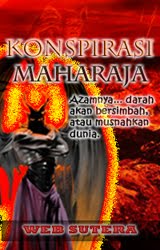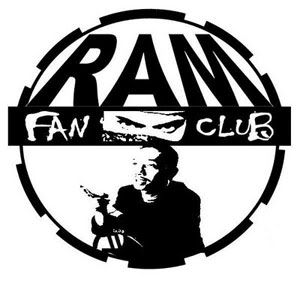.jpg) Saya salah seorang peminat karya Michael Crichton. Saya memiliki semua novel beliau, yang terakhir ialah Next. Setakat ini saya sudah membaca novel sains-fiksyen beliau seperti berikut: Timeline, The Terminal Man, State of
Saya salah seorang peminat karya Michael Crichton. Saya memiliki semua novel beliau, yang terakhir ialah Next. Setakat ini saya sudah membaca novel sains-fiksyen beliau seperti berikut: Timeline, The Terminal Man, State of Best-selling author Michael Crichton, who wrote the world-famous dinosaur adventure novel
His family said the 66-year-old passed away in
The death of sci-fi thriller writer Michael Crichton took his millions of fans by surprise, however he left behind a healthy legacy of highly popular science-themed novels, films and TV shows, including "ER" which still airs today and for which his credits included creator, writer and executive producer. (Live Science)
Antara novel beliau seperti berikut:
Andromeda Strain (1969): A team of scientists investigates a microbe, brought to Earth via a satellite, that wipes out an entire
Science premise: The deaths were caused by a microbe, code named Andromeda, which has the elements required for life on Earth, but no DNA or RNA. Still it somehow transforms matter to energy and vice-versa.
Later on: The novel established Crichton as a best-selling novelist and was turned into a popular 1971 movie directed by Robert Wise. A mini-series based on the novel debuted earlier this year.
Sphere (1987): A group of scientists examines an enormous spacecraft discovered on the bottom of the
Science premise: The spacecraft was constructed 50 years in the future and sent back through time, or maybe it’s alien, because the craft also is covered with thick coral suggesting that it has been lying there for 300 years.
Later on: Barry Levinson directed a 1998 film version of the book, starring Dustin Hoffman, Samuel L. Jackson, Liev Shreiber and Sharon Stone. Some viewers complain about the differences between the book and the movie.
Jurassic
Science premise: One of the major hurdles to cloning extinct animals is retrieving the DNA molecule, which degrades over time, intact from such ancient remains. We don't have once-extinct woolly mammoths or Tyrannosaurus rexes plodding Earth to date, though some researchers have looked into the possibility for the woolly mammoth and the Tasmanian tiger. Several modern-day animals cloned from DNA include Dolly the
 sheep, Cc the cloned kitten, piglets, calves and a mule.
sheep, Cc the cloned kitten, piglets, calves and a mule.Later on: Crichton's book hit the big screens in Steven Spielberg style, with weakling humans facing up against leviathans such as meat-eating Velicoraptor and T. rex. In one scene, T. rex outruns a car during a chase scene. (While T. rex may have eaten dust in a race against a vehicle, studies have shown the big guy could sprint a good 18 mph, or 8 meters per second.)
The Lost World (1995): The sequel to "Jurassic Park" (six years after the park debacle in the story world), this techno-thriller novel follows an expedition to an isolated Central American location where dinosaur stock were hatched and grown before being shipped off to the theme park. Characters have to fend off dinosaur attacks.
Science premise: The book touches on some extinction theories while also revealing the destructive nature of humanity. Several theories exist to explain why all non-avian dinosaurs vanished from Earth about 65 million years ago, including an asteroid impact, disease, climate change and possibly other factors.
Back story: Like the first novel, this book was adapted into a blockbuster film in 1993 by director Steven Spielberg.
Airframe (1996): The sci-fi novel follows a businessman of a fictional aerospace manufacturer as she investigates an in-flight accident, which turns out to be the result of faulty and counterfeit parts along with human error. (The pilot had let his son take the controls).
Science premise: Crichton weaves aircraft design, air safety and general human-machine themes throughout the novel.
Later on: A sub-plot of Airframe involves correcting tabloid sensationalism, which is "an odd thing for a thriller writer to sneer at, particularly Michael Crichton, whose virtues so closely tally with those of a good tabloid journalist," according to a review of the book by The New York Times.
Timeline (1999): A team of historians is funded by a techno-whiz entrepreneur, who bears a glancing resemblance to Bill Gates, to travel back in time to

Science premise: An unreliable 3-D fax machine allows the historians to time travel, where they immerse in the details of life in the Middle Ages, such as catapults, castles, dungeons, legendary killers and the Hundred Years War.
Later on: The book spawned the 2003 movie directed by Richard Donner, as well as a computer game.
Prey (2002): An unemployed software engineer uncovers a program run by his wife's nanorobotics company to create an army of nanorobots for use by the
Science premise: The swarm of nanorobots is created from genetically modified E. coli bacteria. They kill their prey through suffocation by blocking off their bronchial tubes, then later infecting them and slowly devouring them and taking them over.
Back story: Nanotechnology typically deals with structures 100 nanometers (one billionth of a meter) or smaller. The field could wide-ranging applications in medicine, electronics and energy production, though its environmental and health impacts are uncertain.
State of
Science premise: Crichton supports the notion that global warming has been blown out of proportion by using the arguments that carbon dioxide isn't responsible for the Earth's recent warming trend; that some areas are actually cooling; that climate models overestimate warming; and that scientists once predicted an impending global ice age, among other arguments.
Back story: Numerous climate scientists have debunked the claims against global warming brought up in the book. For example, many studies have shown that the warming trends of the recent decades can't be replicated in models without including human greenhouse gas contributions.

Science premise: Scientists can use cells taken from individuals to study diseases, as well as to grow tissues and. Techniques can also isolate specific genes and genomes.
Back story: Next is Crichton's last published work to-date. The risk of creating transgenic animals and using embryonic stem cells are currently hot-button scientific issues. (Live Science)






























1 comments:
Sebuah blog menarik buat peminat buku :)
Post a Comment